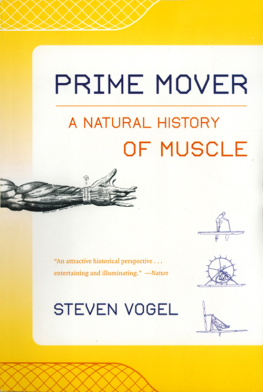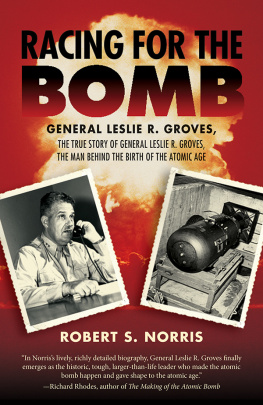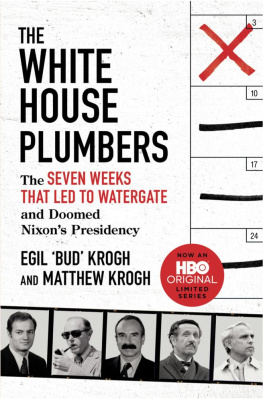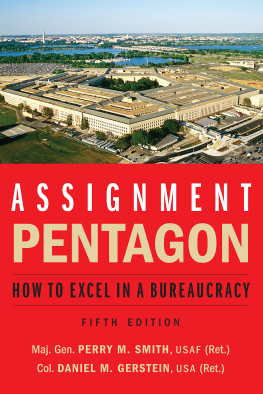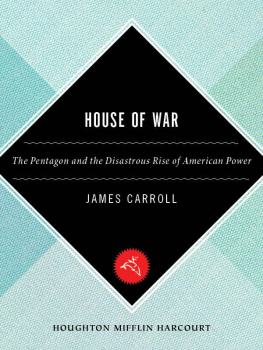



PART I
THE MAKING OF THE PENTAGON
PART II
THE REMAKING OF THE PENTAGON
TO MY PARENTS,
DONALD AND JOAN VOGEL
GO SIR, GALLOP, AND DONT FORGET THAT THE WORLD WAS MADE IN SIX DAYS. YOU CAN ASK ME FOR ANYTHING YOU LIKE, EXCEPT TIME.
NAPOLEON BONAPARTE
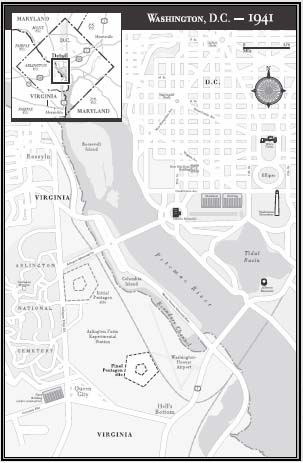
Map by Laris Karklis & Brenna Maloney
Map showing Washington, D.C., Arlington County, Virginia, and environs in the summer of 1941.
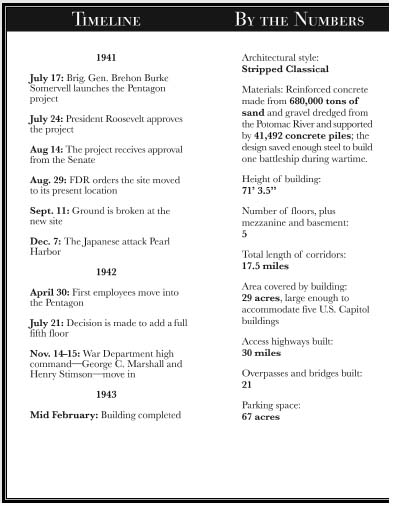
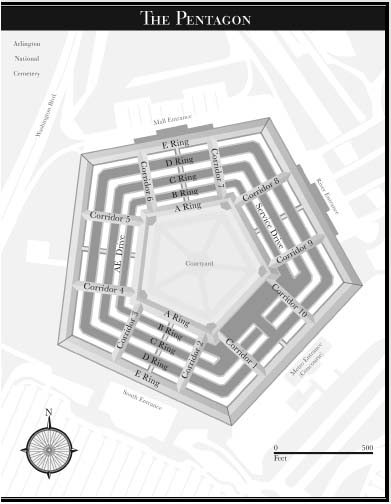
Map by Laris Karklis & Brenna Maloney

The Pentagon and environs, December 1942, U.S. Army map (U.S. Army Corps of Engineers Office of History)
Map of Washington, D.C., in 1941 by Laris Karklis and Brenna Maloney
Pentagon timeline by Laris Karklis and Brenna Maloney
Irregular Pentagon sketch for early plot plan (U.S. Army Corps of Engineers Office of History)
Photo of Somervell in 1941 by Harris & Ewing (The Washington Post photo archives)
Somervell as bricklayer cartoon 1941 by The Washington Post, reprinted by permission
Stathes aerial perspective drawing (National Archives)
Original site map (National Archives)
FDR heaven cartoon 1941 by The Washington Post, reprinted by permission
Pentagon overlay on 187879 map. Original map: G. M. Hopkins, Griffith Morgan. Philadelphia: G. M. Hopkins, 1879, c. 1878 (Library of Congress). Overlay: Daniel Koski-Karell, Technical Report: Historical and Archaeological Background Research of the GSA Pentagon Complex Project Area, 1986. (Office of the Secretary of Defense, Washington Historical Office)
Architects rendering, October 1941 (U.S. Army Corps of Engineers, Office of History)
Aerial photo with blimp. U.S. Army photo (Office of the Secretary of Defense, Washington Historical Office)
Aerial photo by Harry Goodwin, showing the Pentagon construction site right before Pearl Harbor 1941 by The Washington Post, reprinted by permission
Field progress report, May 1942 (National Archives)
Soldiers in hallway, U.S. Army photo (Pentagon Library)
Popular Science schematic (Office of the Secretary of Defense, Washington Historical Office)
Capitol from Popular Mechanics 1943 by The Hearst Corporation, reprinted by permission
Somervell and Stimson cartoon 1944 by The Washington Post, reprinted by permission
Empire State Building graphic (Office of the Secretary of Defense, Washington Historical Office)
Pentagon tower drawing, U.S. Army (The Washington Post photo archives)
Rendering of Pentagon memorial (Pentagon Memorial Fund)
Officer in concourse showing Brazilian visitors model of the Pentagon, 1946 U.S. Army photo (The Washington Post photo archives)
Photo of marchers in front of Pentagon (The Washington Post photo archives)
Map of the march on the Pentagon by Mike Jenkins, Peter Jenkins, and Brad Goodwin
Pentagon renovation logo, the Pentagon Renovation and Construction program (PENREN)
The damaged Pentagon on September 11, 2001 (Department of Defense)
The planes path on 9/11, adapted by Michael Keegan from an original 2002 graphic by Doug Stevens and Brenna Maloney in The Washington Post, reprinted by permission
Aerial photo showing the Phoenix Project, Pentagon Renovation and Construction program (PENREN)
Rendering of Pentagon memorial (Pentagon Memorial Fund)

PART I
(Ranks and titles are primarily as of 1941)
The BuildersArmy
Brigadier General Brehon B. Somervell, chief of the Armys Construction Division, later commander of Army Services of Supply
Colonel Leslie R. Groves, chief of operations and later deputy chief of Construction Division, later head of the Manhattan Project
Lieutenant Colonel Hugh Pat Casey, chief of design for Construction Division
Captain Clarence Renshaw, constructing quartermaster/engineer for the Pentagon project
Lieutenant Robert Furman, executive officer for the Pentagon project
The BuildersContractors and Architects
John McShain, chief contractor for the Pentagon project
J. Paul Hauck, job superintendent for the Pentagon project
G. Edwin Bergstrom, chief architect for the War Department
David Witmer, chief assistant to Bergstrom, later his replacement
Luther Leisenring, chief of the architects specifications section
Ides van der Gracht, chief of production for the Pentagon design team
Socrates Thomas Red Stathes, a draftsman
Larry Lemmon, a draftsman
The White House
President Franklin D. Roosevelt
Harry Hopkins, special adviser to FDR and former head of the Works Projects Administration
Major General Edwin Pa Watson, the presidents military aide
Harold Smith, director of the White House budget office
Harold Ickes, secretary of the interior
The War Department
Henry L. Stimson, secretary of war
General George C. Marshall, Army chief of staff
Robert Patterson, under secretary of war
John J. McCloy, assistant secretary of war
Robert Lovett, assistant secretary of war for air
William Hastie, civilian aide to Stimson
Members of Congress
Senator Harry S. Truman, Democrat of Missouri, chairman of Senate special committee investigating national defense; in April 1945 succeeded FDR as president
Representative Clifton Woodrum, Democrat of Virginia, member of House Appropriations Committee
Representative Merlin Hull, Progressive of Wisconsin
Senator Carter Glass, Democrat of Virginia, chairman of Senate Appropriations Committee
Representative Albert Engel, Republican of Michigan, member of House Military Appropriations subcommittee
Civilian Commissioners and Staff
Next page





